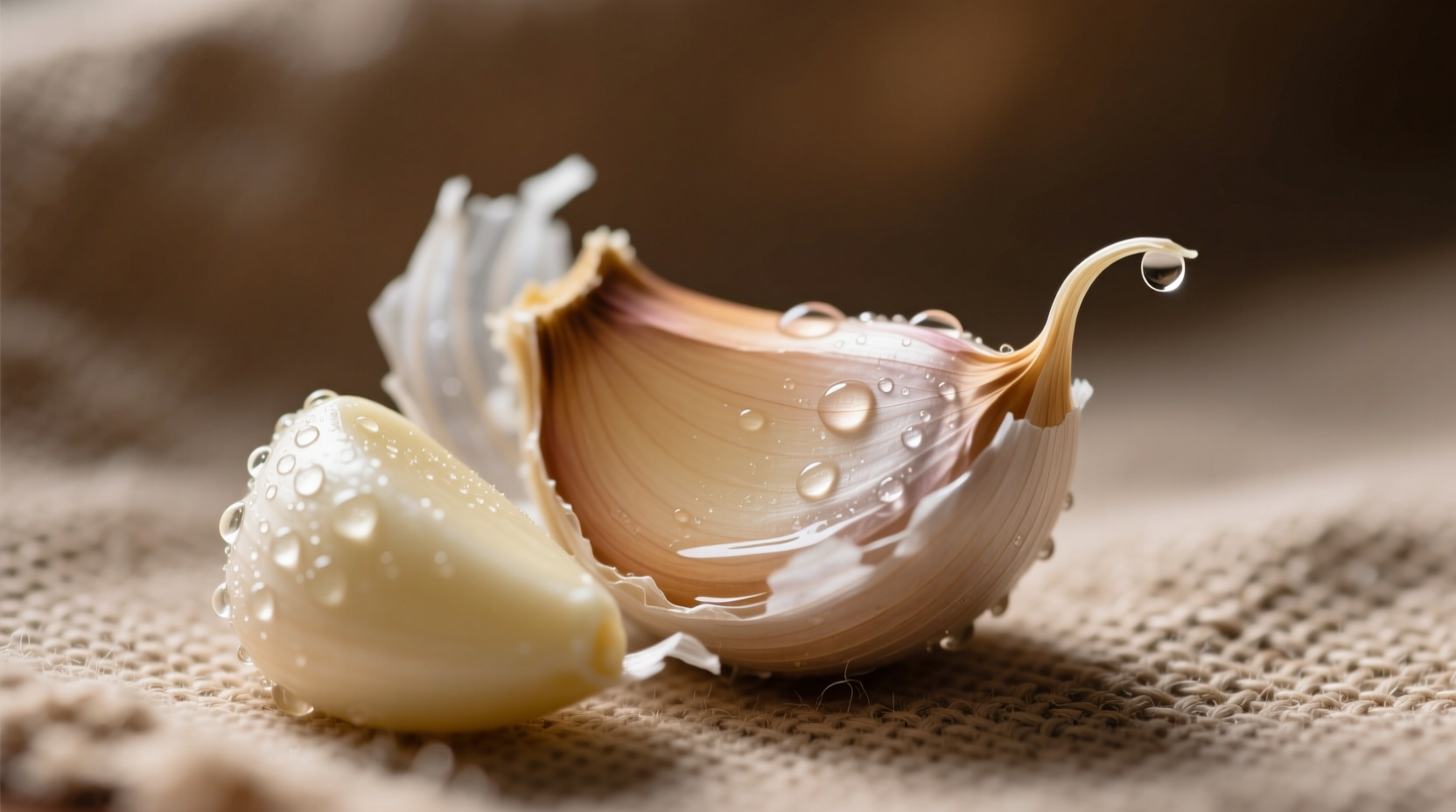For busy home cooks and professional chefs alike, peeled garlic has become a kitchen staple that bridges the gap between convenience and quality. Understanding how to select, store, and utilize pre-peeled garlic properly can transform your cooking experience while maintaining the authentic garlic flavor your recipes demand.
What Exactly Is Peeled Garlic (And Why It Matters)
Peeled garlic refers to individual garlic cloves that have been removed from their papery skins, either by hand or through commercial processing. Unlike jarred minced garlic or garlic paste, quality peeled garlic maintains the whole clove structure, preserving more of the natural enzymes that create garlic's distinctive flavor profile when cut or crushed.
The key difference between peeled and whole garlic lies in the protective barrier. When garlic is peeled, the clove becomes more vulnerable to moisture loss, oxidation, and microbial growth. This explains why properly stored peeled garlic has a significantly shorter shelf life than its unpeeled counterpart, which can remain viable for months under ideal conditions.

Storage Science: Maximizing Your Peeled Garlic's Lifespan
Proper storage determines whether your peeled garlic remains vibrant and flavorful or quickly deteriorates. Based on food safety research from the USDA's FoodKeeper application, here's how different storage methods affect shelf life:
| Storage Method | Temperature | Expected Shelf Life | Quality Indicators |
|---|---|---|---|
| Airtight container in refrigerator | 40°F (4°C) or below | 7-10 days | Firm texture, pure white color |
| Submerged in olive oil, refrigerated | 40°F (4°C) or below | 3-4 days | Clear oil, no cloudiness |
| Freezer in airtight packaging | 0°F (-18°C) | 10-12 months | No freezer burn, solid texture |
| Room temperature | Ambient | 1-2 days | Rapid browning and softening |
Food safety experts at the National Center for Home Food Preservation emphasize that storing peeled garlic in oil at room temperature creates ideal conditions for Clostridium botulinum growth, which can cause botulism. Always refrigerate garlic-in-oil mixtures and consume within 3-4 days.
Flavor Performance: Peeled vs. Fresh Garlic in Cooking
Does peeled garlic deliver the same flavor impact as freshly peeled cloves? The answer depends on storage duration and cooking application. Culinary research published in the Journal of Food Science reveals that allicin—the compound responsible for garlic's characteristic flavor—begins degrading immediately after peeling.
For dishes where garlic serves as a subtle background note (like soups and stews), properly stored peeled garlic performs nearly identically to fresh. However, for recipes where garlic takes center stage (like aiolis or garlic bread), the flavor difference becomes more noticeable after 5+ days of storage.
Professional chefs recommend these techniques to maximize flavor when using pre-peeled garlic:
- Crush just before use: Releasing the enzyme alliinase by crushing or mincing immediately before cooking creates more allicin
- Add at optimal cooking stage: For sautéing, add peeled garlic to warm (not hot) oil to prevent burning
- Adjust quantities: Use 10-15% more peeled garlic than fresh in long-cooking dishes to compensate for flavor degradation
When Peeled Garlic Shines: Ideal Culinary Applications
Certain cooking scenarios make peeled garlic particularly advantageous. Understanding these context boundaries helps you make informed decisions about when convenience outweighs marginal flavor differences:
Best for peeled garlic:
- Meal prep for the week (soups, sauces, braises)
- Dishes requiring uniform garlic distribution (like mashed potatoes)
- Recipes with extended cooking times (stews, slow cooker dishes)
- Situations requiring precise garlic measurement
Best for fresh garlic:
- Raw applications (vinaigrettes, pesto, aioli)
- Quick-cooking dishes (stir-fries, pasta aglio e olio)
- Recipes where garlic is the star ingredient
- When maximum pungency is desired
Avoiding Common Peeled Garlic Mistakes
Even experienced cooks sometimes mishandle peeled garlic. Watch for these frequent errors:
Mistake: Storing in the original plastic container without ventilation
Solution: Transfer to a glass container with a slightly cracked lid for optimal moisture control
Mistake: Using garlic that's started to sprout
Solution: Remove green sprouts immediately—they create bitter flavors but don't indicate spoilage
Mistake: Freezing without proper packaging
Solution: Flash-freeze cloves on a tray before transferring to freezer bags to prevent clumping
Quality Assessment: How to Spot Good vs. Bad Peeled Garlic
Before using any peeled garlic, perform this quick quality check:
- Visual inspection: Cloves should be pure white to off-white. Yellow or brown spots indicate oxidation.
- Texture test: Should feel firm when gently squeezed. Soft or mushy areas signal spoilage.
- Smell check: Should have a clean, sharp garlic aroma. Sour or vinegary smells indicate fermentation.
- Moisture level: Surface should be dry. Excessive moisture promotes mold growth.
According to FDA food safety guidelines, discard any peeled garlic showing signs of mold, sliminess, or strong off-odors. When in doubt, throw it out—garlic spoilage can happen rapidly once degradation begins.
Practical Conversion Guide for Recipe Success
Understanding equivalent measurements prevents recipe disasters. This conversion chart helps you adjust quantities based on storage duration:
| Storage Duration | 1 Fresh Clove Equivalent | Best Recipe Applications |
|---|---|---|
| Freshly peeled (0-2 days) | 1 peeled clove | All applications |
| Refrigerated (3-5 days) | 1.25 peeled cloves | Cooked dishes, not raw applications |
| Refrigerated (6-10 days) | 1.5 peeled cloves | Long-cooking dishes only |
| Thawed from frozen | 1.25 peeled cloves | Cooked dishes, add earlier in cooking process |
Remember that frozen garlic works best when added directly to hot dishes without thawing, as the freezing process breaks down cell structures and releases more flavor compounds immediately upon heating.
Environmental Considerations: Balancing Convenience and Sustainability
While peeled garlic offers undeniable convenience, consider these environmental factors:
- Commercially peeled garlic typically generates 20-30% more waste than home-peeled cloves
- Processing requires additional energy and water resources
- Packaging often involves single-use plastics
For eco-conscious cooks, the most sustainable approach combines both methods: peel larger quantities when you have time and store properly for future use, reserving commercial peeled garlic for busy periods. This hybrid approach minimizes waste while maintaining cooking flexibility.











 浙公网安备
33010002000092号
浙公网安备
33010002000092号 浙B2-20120091-4
浙B2-20120091-4